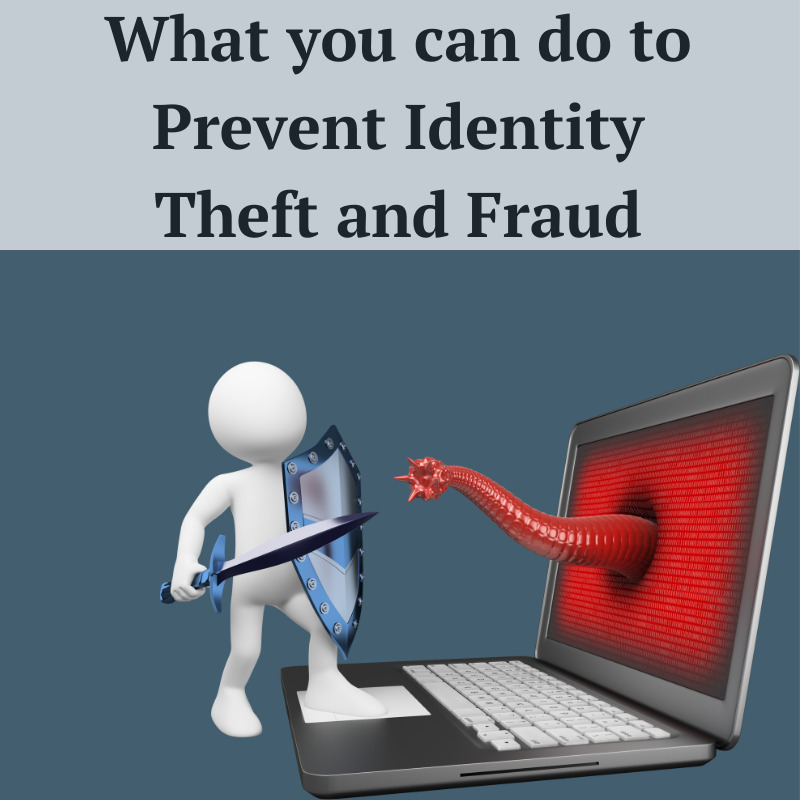By: Brandi B. Graham, CTFA, CFP®
Reported fraud losses increased more than 70% from 2020 to 2021. The Federal Trade Commission received over 2.8 million fraud reports from consumers in 2021 representing more than $5.8 billion in losses to fraud. There are multitudes of methods aimed at unsuspecting citizens. Some of these include people trying to collect money for various things that are not real, pretending to be a family member in trouble, and telephone calls claiming your online account has a large purchase and you must purchase a gift card to resolve the issue. However, what about the type of fraud when someone steals your identity? Leaks to sensitive data like the Equifax, Blue Cross Blue Shield and Yahoo email breaches can give thieves the information they need to open credit cards in your name and borrow money. Even worse, these loans could affect your ability to borrow money and put you in a situation to have to prove your own identity. Approximately 145.5 million American people had highly sensitive information compromised in the Equifax breach alone. Computer hackers make a career of gaining access to sensitive information and selling your data to criminals who use it against you. So what can you do to protect yourself from identity theft and fraud?
What you can do:
Credit Monitoring: There are several resources for monitoring activity on your credit report. Some charge annual fees and some are free. Many credit card companies are now offering free credit monitoring. If there is an inquiry on your credit account or a new credit card or loan established in your name you will receive a notification.
Check your credit report: Each of the major credit bureaus provide a free credit report annually. Set up a schedule to check your credit report at one agency every few months. www.annualcreditreport.com
Credit Freeze: Credit monitoring and checking your credit report will detect unauthorized activity but will not prevent it. One of the most drastic measures you can take to protect yourself from fraud and identity theft is to freeze your credit. This will help prevent fraud since creditors will not have access to your credit information. If you do want to apply for a store credit card or new car loan, you will need to contact the credit agency to “unfreeze” your credit file temporarily.
Other ways to protect yourself:
You do not need to be a computer guru to add security to your online presence. Electronic devices and online accounts contain a significant amount of personal information that when combined can lead to identity theft. Here are a few simple steps you can take to protect yourself.
- Add secret questions to digital account access.
- Make sure your antivirus, malware and firewall software is up to date.
- Create passwords that are more complicated and change them periodically.
- Enable two-step (two factor) authentication: This is one of my favorite methods and is so easy to put in place. This adds an extra layer of security to your account in the event someone steals your password. You sign into your account and receive a text with a security code to verify your identity. Ironically, during the process of drafting this article I received a two-step notification from Amazon with an OTP code, which I did not request followed by a message indicating Amazon blocked an attempt to gain access to my billing information. I immediately changed my password. Fortunately, for me I had this two-step authentication set up because there is a great deal of personal information housed in an Amazon account.
- Be careful what you send in unencrypted emails. Never send documents with your social security number or other sensitive information in an unsecure email.
- Consolidate accounts. Close unused accounts but be sure you understand how this could affect your credit score. Longevity on credit cards adds to your credit rating; closing an older credit card account could lower your credit score.
- Add alerts to bank accounts and credit cards to notify you via text or email if a transaction over a set dollar amount reaches your account.
- Look for signs of fraud on emails. Never open emails, attachments or click on links from invalidated sources.
- Screen your calls. Do not be a victim of telephone scams. There are too many to describe in this article.
Almost 1% of our population were victims of fraud in 2021. None of us wants to be associated with that elite group. Be vigilant.
Was your personal information compromised during the Equifax breach? Find out by visiting www.equifaxsecurity2017.com
Sources:
U.S. Population 1950-2022 Macro Trends retrieved on 4/22/2022 from https://www.macrotrends.net/countries/USA/united-states/population
Federal Trade Commission website: https://www.ftc.gov


